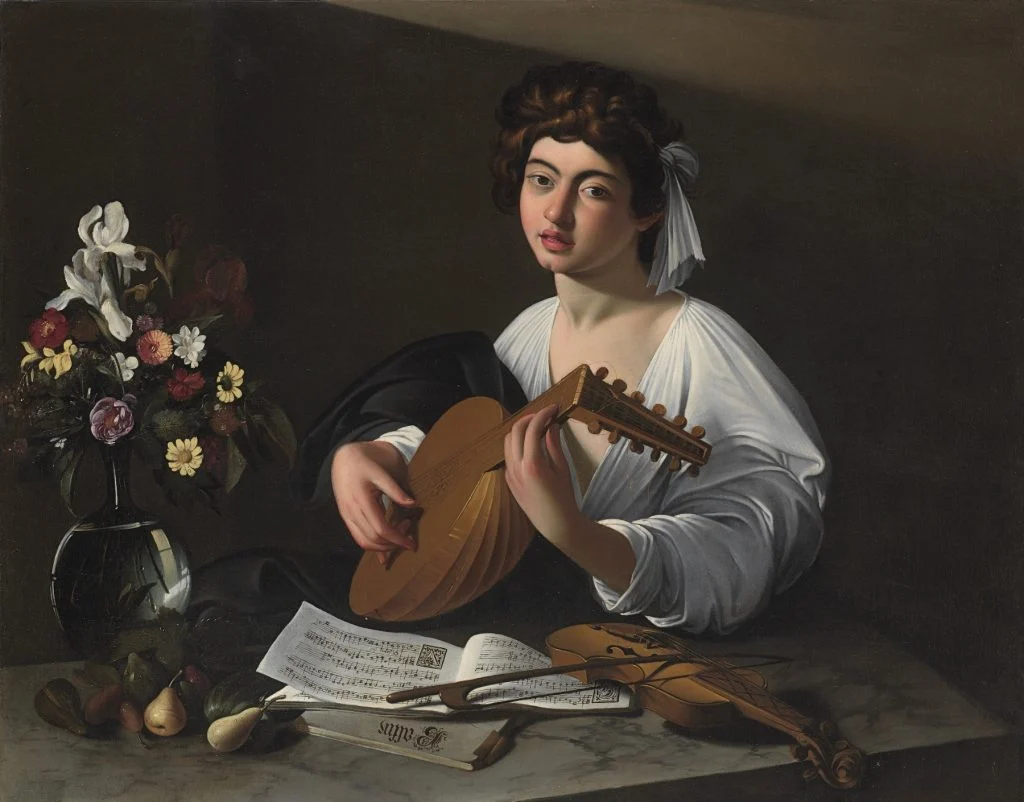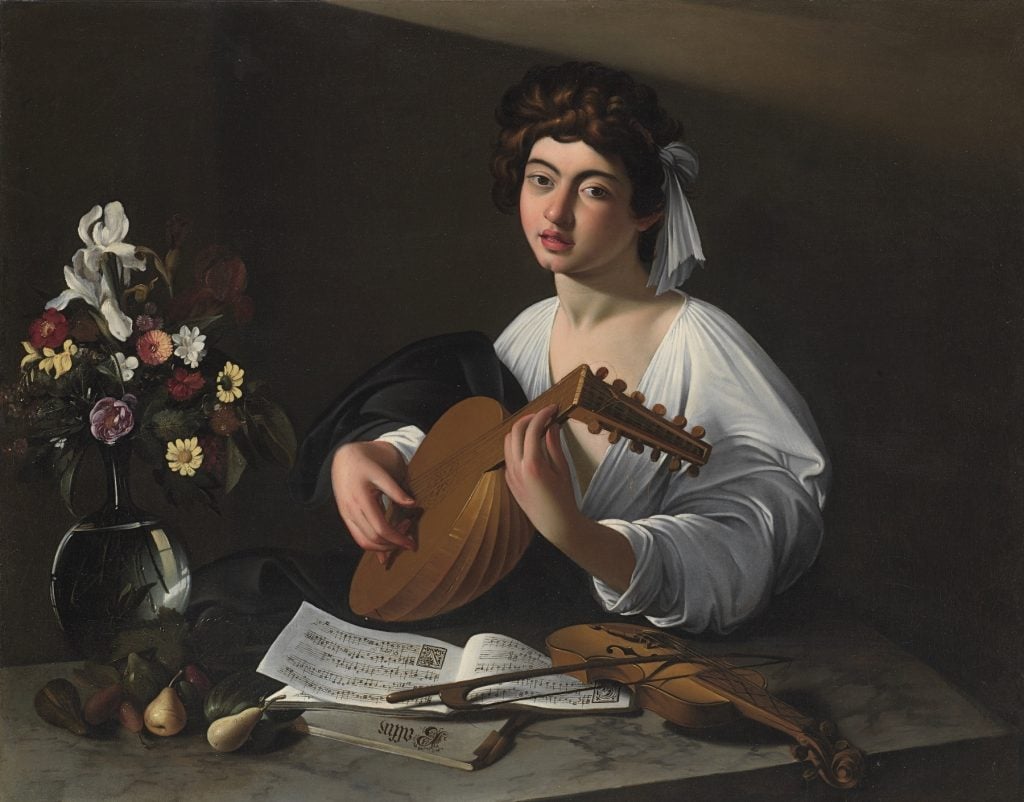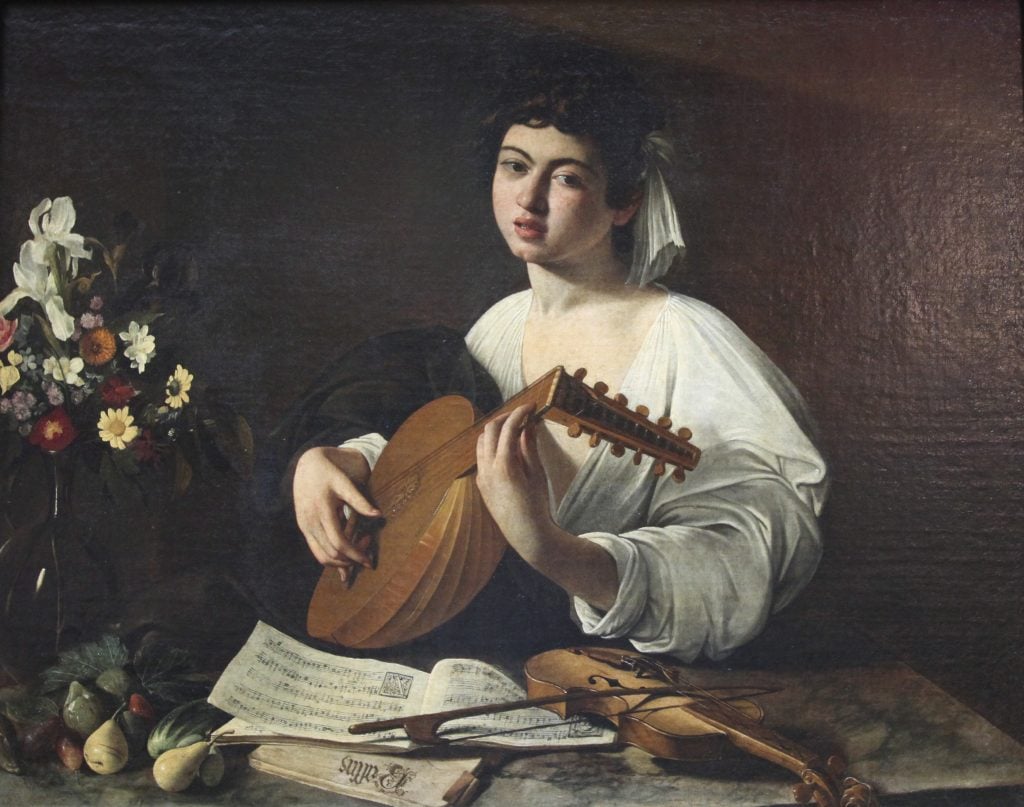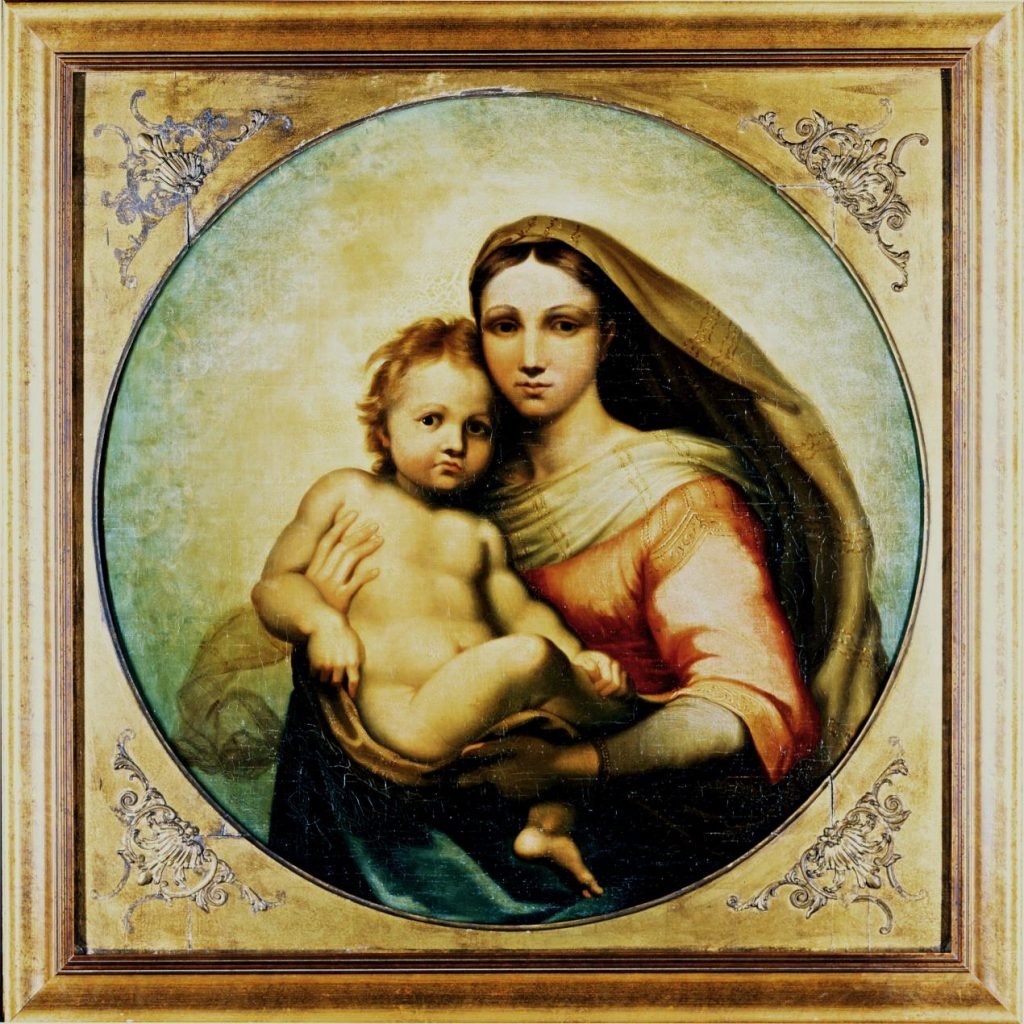
A version of "The Lute Player," long believed to be a copy, was authenticated by artificial intelligence.

by Jo Lawson-Tancred September 30, 2025
A decades long dispute over the authenticity of a possible Caravaggio painting has been reignited after a new A.I. analysis attributed it to the Italian Baroque master with a probability of 85.7 percent. The technology’s opinion is backed by several more human experts who are pushing to have the work reconsidered.
The painting in question is one of three known versions of The Lute Player, known as the Badminton version because it originally belonged to Badminton House in England. Another undisputed version hangs in the Hermitage in Russia, while a third belongs to the Wildenstein collection and was on long term loan to the Met in New York from 1990 until 2013.
Appraised as a worthless copy “after Caravaggio” by Sotheby’s in 1969, the Badminton version was at that time sold for just £750 (then about $1,750, according to historical exchange rates). In 2001, the auction house sold it again as a painting by the “circle of Caravaggio” for about £71,000 (or $100,000, according to historical exchange rates).
British art historian Clovis Whitfield, who bought the work with the late collector Alfred Bader, believes that leading scholars are wrong to continue dismissing the work as a copy. Speaking to the Guardian, Whitfield explained that the work “corresponded exactly” to a description in a biography of Caravaggio written by Giovanni Baglione in 1642. The author “mentions minutely observed details such as the reflection on dew drops on the flowers,” Whitfield said.
His claim has been rejected by the American art historian Keith Christiansen, who was head of European paintings at the Met when it displayed the Wildenstein version. In 2007, Christiansen told Whitfield that “no one—certainly no modern scholar—has ever or ever would entertain the idea that your painting could be painted by Caravaggio.”
At that time, Christiansen could not account for the possibility that A.I. might be used to analyze the work. According to Carina Popovici, founding CEO of the Swiss company Art Recognition, A.I. has found a “strong match” between the Badminton version of The Lute Player and a dataset of known paintings by Caravaggio, explaining that any certainty “over 80 percent is very high.”
“The A.I. result knocks Christiansen off his perch,” Whitfield said in response to the finding. But, Art Recognition said, the technology had more bad news for the ex-Met expert. The same A.I. apparently found that it is the Wildenstein version that is “not an authentic work,” according to Popovici. She worked on the case with the help of researchers from the University of Liverpool.
Speaking to Artnet, she added that “this case highlights again the rigidity of the current market and the way in which strongly held expert views can hinder progress.” She hopes that the use of a non-human tool like A.I. “can contribute to addressing such situations with greater openness and less conflict.”
Christiansen has declined to comment.

The Hermitage version of Caravaggio’s The Lute Player (c. 1595). Photo: The Art Collector / Print Collector / Getty Images.
But this is not a simple case of human versus machine. Several more human experts, not all of whom specialize in art, have also come out in support of the Badminton version. One of these is David Van Edwards, president of the Lute Society, who says that the lute in the Wildenstein version is inaccurately depicted, unlike in the Badminton and Hermitage versions.
The barrister William Audland plans to write a book about the case in which he will argue that “a manifest injustice is being done by any scholar who suggests that the Wildenstein version is autograph and the Badminton version is a poor copy.” He said that, having thoroughly reviewed the evidence, he believed it indicated “the opposite conclusion, one which has now been corroborated by A.I. analysis, which is objective, unlike the subjective opinions of scholars which can get in the way.” The evidence in support of the Badminton version is covered in greater detail on the art mystery podcast “Is it?” hosted by Noah Charney, who is also preparing an academic paper on the painting.
While, in some cases, A.I. might be a useful tool for human-led investigations into an artwork, its accuracy depends heavily on the quality of its training. It may also inherit biases from its developers. A.I. cannot, therefore, be assumed to offer an objective approach. For example, in 2023, two different A.I. models came to opposing conclusions about whether the same painting could be attributed to Raphael.

A.I.-power facial recognition technology has identified the previously unattributed de Brécy Tondo painting as the work of Raphael. Photo courtesy of the de Brécy Tondo Trust.
Whitfield, who would like to see the Badminton version enter a major institutional collection in the U.K., believes that the painting may have benefitted from several centuries dismissed and “forgotten in an English country house.” Compared to its companion painting, Caravaggio’s Musicians, which he described in an email as “badly abraded,” the work “exemplifies the refined ‘finish’ Caravaggio perfected.”
Art Recognition is a commercial enterprise that has led the way in using A.I. to authenticate artworks, although some of its claims have been dismissed by leading scholars. While its approach has not yet gained widespread use or acceptance in the art market, there has been some uptake, most notably when Germann Auctions in Zurich used A.I. to certify three artworks in a sale last November.
Paintings attributed to Caravaggio command high sums. Last year, Caravaggio’s Ecce Homo sold to a British collector for €36 million ($39 million), a significant increase on the reserve price of just €1,500 ($1,780) that it was given before its authentication. Even this price was a bargain compared to the $110 million that one collector supposedly paid in the mysterious private sale of a disputed Caravaggio discovered in an attic in France in 2014.
Source: https://news.artnet.com/art-world/caravaggio-lute-player-attribution-ai-2694259